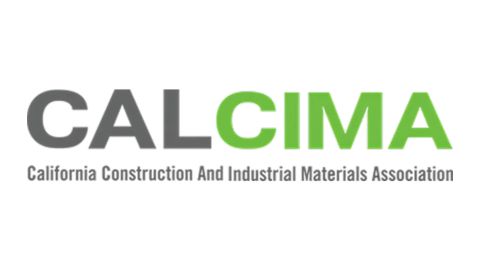James McShane, Business Development Manager for CDE North America has been on the road from New York to New Mexico, Ohio to Oklahoma and everywhere in between. He’s met some of the biggest players in the sand & aggregates industry, so we caught up with him to hear more about the biggest challenges facing the US sand & aggregates industry in 2020.
James shares three challenges he’s heard time and again from the industry veterans:
- How to attract younger labor and talent in a historically traditional industry.
- How to deliver greater energy efficiency.
- How to gain permits and deliver newly available resources local to large populations, haulage costs, diminishing resources, and limited access to water.
Looking at the current workforce involved with the sand and gravel industry, especially here in Texas…
According to the Labor Force Statistics from the Current Population Survey, the average age for a worker employed within the mining and quarrying industry is 46 years of age. This is reflected when I visit sites across the country, there appears to be a reduced amount of the new young talent being employed into this industry especially with a ‘hands on’ role. This will have a significant long-term impact on employers as older generations reach retirement age, and employers search for new workers, especially ones with the much-needed experience it takes to perform in a sand and gravel mine with a safe and efficient manner.
The industry is stable, and with growing demands for federal investment in infrastructure it’s likely to continue as a sustainable industry, the Bureau of Labor statistics show a strong correlation between employment and salary increases since 2001, especially within the non-metallic mineral mining and quarrying.
Offering stability as an industry is important when attracting new talent, as is demonstrating technological advancements and increased safety. Some of the younger talent I’ve met this year shared their experiences; innovation and automation featured heavily in their decision making to join the industry.
Having a new fully automated and efficient wash plant that requires little manpower is becoming more and more attractive, especially with the safety factors associated with these new systems. They felt it put them on a par with other industries and ensured the longevity of the industry for future generations.
So how can we become energy efficient?
Traditionally, if you visit a sand and gravel mine that produces the common industry-wide sand and gravel products via a wet process, expect the mine to be plus 100 acres in size, expect to see large industrial loaders, a large structure with a wet sizing screen mounted above a classifier tank with two large sand screws peering out either side beneath the whole structure producing the sand products, usually a concrete sand and a fine sand.
Take a walk over towards the freshwater pond supplying the wet plant with fresh water and you will find a large HP water pump, usually sitting on the bank. Take yourself over to the waste pond where the clay and waste particles are traditionally pumped from the back of the sand screw overflow. Here you will see a lot of waste clay particles but also with the traditional method we will commonly see some valuable sand product in there too!
This is usually from fines being lost via the back of the sand screw, and you may even come across a large excavator with a long arm pulling out and clearing the ditch to allow the water from the wet plant to pass through and become usable again via the freshwater pond.
Look familiar?
Although this is the traditional method of washing sand and gravel employed across the USA, there can be considerable downfalls to this type of process, including:
- Increased expenditure - there can be large costs associated with long arms sitting on the edge of waste ponds
- Double handling - this method typically involves double handling of wet products to allow suitable drying time before being able to load onto trucks.
- High running costs - these larger HP water pumps will cost more to supply the water required for the wet plants.
- Lost revenue - the loss of valuable sand to waste ponds that could be alternatively sitting in a high-value product stockpile.
So how do we counteract these common issues?
Out with the old, and in with the new!
Less space, more product!
Replacing this traditional method of washing sand and gravel with a more efficient technology with a low profile and modular type equipment is starting to take over. We are seeing wash plants now being installed with 1/3 of the footprint, producing double the amount of sellable product.
These machines can appropriately wash in-spec products, especially when trying to achieve a common washed concrete or mason type sand, all with zero valuable sand being lost to the ponds. This means a highly efficient washing process, a dry product produced, eliminating the need for double handling or excavation costs of a long arm as we traditionally see.
How can a more energy-efficient approach help gain permits and deliver newly available resource local to large populations, whilst reducing costs?
This energy-efficient approach employed by CDE can also lead to huge benefits commercially and environmentally. Resources are becoming fewer, especially close to urban areas and lifespans of potential mining sites are becoming shorter and shorter due to this.
Water limitations and permits can be another restriction with new mines and achieving the local approval can be quite difficult with the traditional large structure approach. The environmental concerns associated with this industry aren’t going away, so delivering a more sustainable solution that enables producers to meet demand is necessary and I for one am glad that regulators are ensuring this happens.
CDE technology can counteract regulatory concerns as well as deliver commercial benefits. A CDE modular or turnkey solution can process quarry by-products or waste to create consistent high spec construction materials. With low HP processes and all-electric drives, the system enables renewable energy use, recycling of up to 90% of the process water.
It also reduces water stress, and with low noise emissions, a small footprint, and portable design it can be easily located in constrained urban areas to reduce haulage time & costs, and process CD&E materials at the point of origin.
Discover our advanced wet processing solutions at ConExpo 2020 in Las Vegas in March. I will be joined by the CDE North America team, along with members of our global team to showcase our equipment, including the newest model of our patented Combo™ all-in-one wet processing and water management system.





